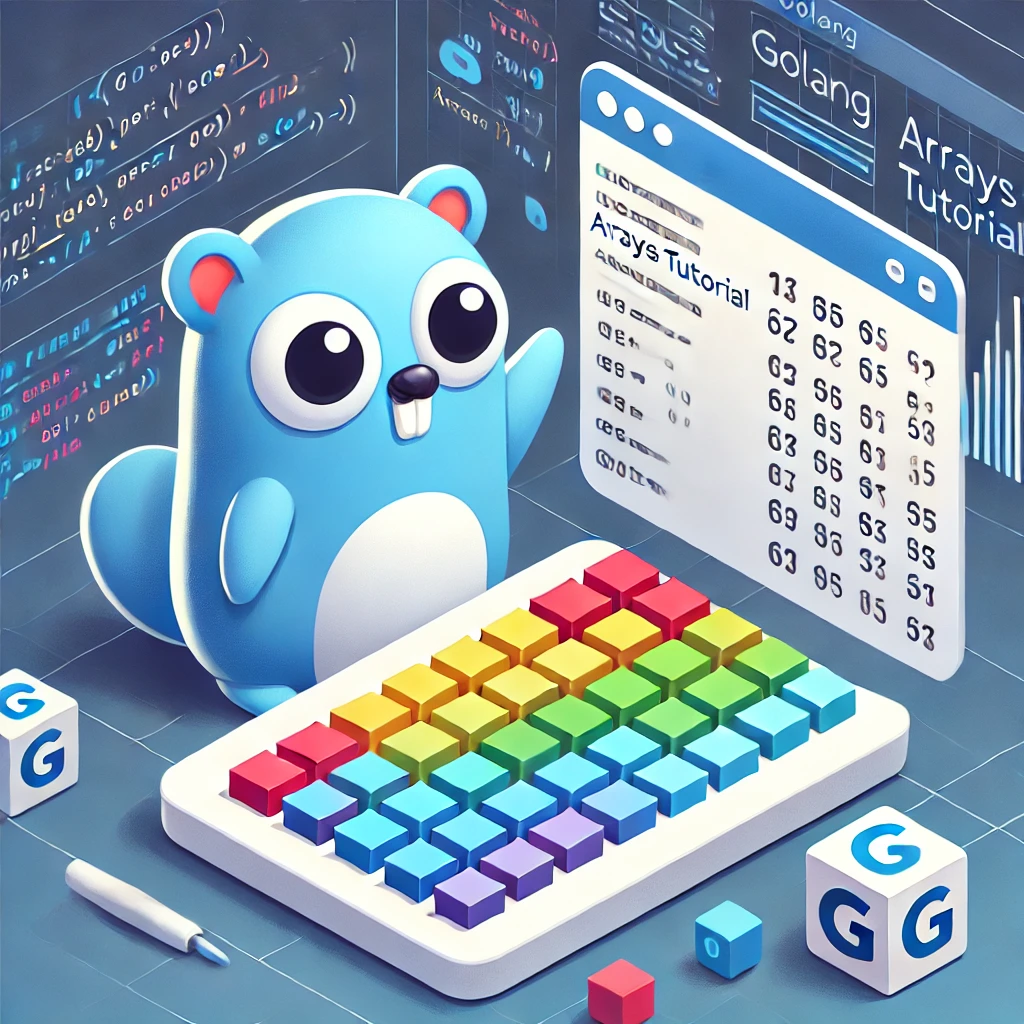
Arrays in GoLang
In Go, arrays are fixed-size collections of elements of the same type. They provide a way to store multiple values in a single variable. Below are the key concepts and usage examples of arrays in Go:
Syntax
sizeis the number of elements in the array.Typespecifies the type of elements in the array.

Examples
1. Declaring and Initializing an Array
var numbers [5]int // An array of 5 integers with default value 0
fmt.Println(numbers) // Output: [0 0 0 0 0]
// Declaring and initializing in one line
days := [7]string{"Monday", "Tuesday", "Wednesday", "Thursday", "Friday", "Saturday", "Sunday"}
fmt.Println(days) // Output: [Monday Tuesday Wednesday Thursday Friday Saturday Sunday]
// Letting Go infer the size
colors := [...]string{"Red", "Green", "Blue"}
fmt.Println(colors) // Output: [Red Green Blue]
2. Accessing and Modifying Elements
var arr [3]int
arr[0] = 10
arr[1] = 20
arr[2] = 30
fmt.Println(arr) // Output: [10 20 30]
fmt.Println(arr[1]) // Output: 20
3. Iterating Over an Array
Using for loop:
numbers := [5]int{1, 2, 3, 4, 5}
for i := 0; i < len(numbers); i++ {
fmt.Println(numbers[i])
}
Using for range:
for index, value := range numbers {
fmt.Printf("Index: %d, Value: %d\n", index, value)
}
4. Multi-Dimensional Arrays
var matrix [2][3]int
matrix[0][0] = 1
matrix[0][1] = 2
matrix[0][2] = 3
matrix[1][0] = 4
matrix[1][1] = 5
matrix[1][2] = 6
fmt.Println(matrix)
// Output: [[1 2 3] [4 5 6]]
5. Passing Arrays to Functions
Arrays in Go are passed by value (a copy of the array is passed).
func modifyArray(arr [3]int) {
arr[0] = 100
}
func main() {
nums := [3]int{1, 2, 3}
modifyArray(nums)
fmt.Println(nums) // Output: [1 2 3]
}
If you want to modify the original array, pass a pointer to it:
func modifyArray(arr *[3]int) {
arr[0] = 100
}
func main() {
nums := [3]int{1, 2, 3}
modifyArray(&nums)
fmt.Println(nums) // Output: [100 2 3]
}
6. Comparing Arrays
Arrays can be compared using the == operator if they are of the same type and size.
a := [3]int{1, 2, 3}
b := [3]int{1, 2, 3}
c := [3]int{4, 5, 6}
fmt.Println(a == b) // Output: true
fmt.Println(a == c) // Output: false
Key Points
- Arrays in Go have a fixed size and cannot be resized.
- For dynamic sizes, use slices, which are more flexible and commonly used.
- Arrays are value types, meaning modifications to an array in a function do not affect the original unless passed by reference.
Let me know if you want more details about slices or specific array operations!
